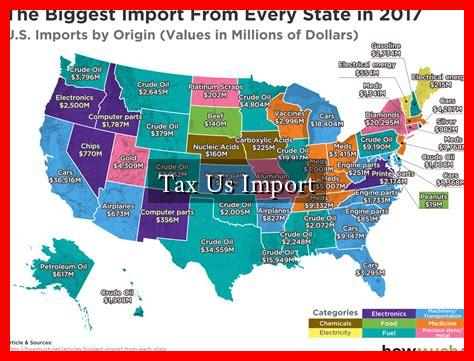-
Table of Contents
Understanding US Import Taxes: A Comprehensive Guide
Import taxes, also known as tariffs, play a crucial role in international trade, affecting businesses and consumers alike. For those looking to import goods into the United States, understanding the intricacies of these taxes is essential. This article delves into the various aspects of US import taxes, including their purpose, how they are calculated, and their impact on the economy.
The Purpose of Import Taxes
Import taxes serve several key functions in the US economy:
- Revenue Generation: Import taxes are a significant source of revenue for the federal government, helping to fund various public services.
- Protection of Domestic Industries: By imposing tariffs on foreign goods, the government aims to protect local businesses from international competition.
- Regulation of Trade Balance: Import taxes can help manage the trade deficit by making imported goods more expensive, encouraging consumers to buy domestically produced items.
How Import Taxes are Calculated
Import taxes in the US are primarily determined by the Harmonized Tariff Schedule (HTS), which categorizes goods and assigns specific duty rates. Here’s how the process works:
- Classification: Each imported product is classified under a specific HTS code, which determines the applicable duty rate.
- Valuation: The customs value of the goods is assessed, which includes the cost of the product, shipping, and insurance.
- Duty Rate Application: The duty rate is applied to the customs value to calculate the total import tax owed.
For example, if a company imports electronics valued at $10,000 with a duty rate of 5%, the import tax would amount to $500.
Types of Import Taxes
There are several types of import taxes that businesses and individuals may encounter:
- Ad Valorem Tariffs: These are calculated as a percentage of the value of the imported goods.
- Specific Tariffs: These are fixed fees based on the quantity or weight of the goods, regardless of their value.
- Compound Tariffs: A combination of ad valorem and specific tariffs, these are applied to certain products.
Impact of Import Taxes on Businesses and Consumers
Import taxes can have significant implications for both businesses and consumers:
- Increased Costs: Businesses may face higher costs for imported goods, which can lead to increased prices for consumers.
- Supply Chain Disruptions: Companies relying on imported materials may experience disruptions, affecting production timelines.
- Market Opportunities: Domestic producers may benefit from reduced competition, potentially leading to increased market share.
For instance, the tariffs imposed during the US-China trade war led to a notable increase in prices for various consumer goods, impacting purchasing decisions across the country.
Case Study: The US-China Trade War
The US-China trade war, which began in 2018, serves as a pertinent example of the effects of import taxes. The US government imposed tariffs on billions of dollars’ worth of Chinese goods, aiming to reduce the trade deficit and protect American industries.
. The consequences included:
- Price Increases: Many consumer products, including electronics and clothing, saw price hikes due to increased import taxes.
- Retaliatory Tariffs: China responded with its own tariffs, affecting US exports and creating a ripple effect in global trade.
- Shifts in Supply Chains: Companies began to explore alternative sourcing options to mitigate the impact of tariffs, leading to changes in global supply chains.
Conclusion
Understanding US import taxes is vital for anyone involved in international trade. These taxes not only influence the cost of goods but also shape the broader economic landscape. By comprehending how import taxes are calculated, their types, and their implications, businesses and consumers can make informed decisions. As global trade continues to evolve, staying updated on import tax regulations will be essential for navigating the complexities of international commerce.
For more information on US import taxes and regulations, you can visit the U.S. Customs and Border Protection website.




